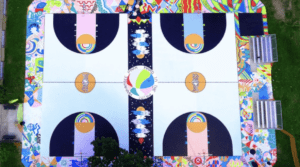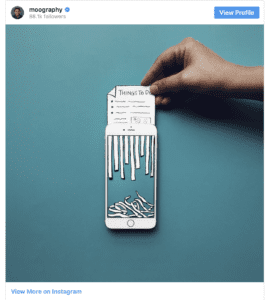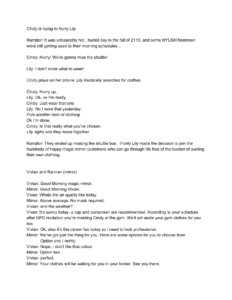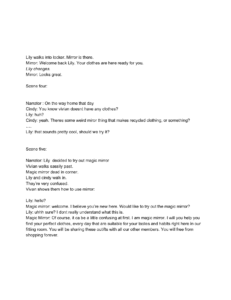Recitation
Inspired by a definition of interaction in The Art of Interactive Design by Chris Crawford, “a cyclic process in which two actors alternately listen, think, and speak” (Crawford 1), I extracted the keyword “think”. Therefore now my definition of interaction is the process of communication between the human and the machine. During this process, the machine attempts to satisfy the human’s needs, the human provides feedback to the machine, and the machine caters to human needs more accurately. That is to say, if the machine doesn’t analyze human needs and improve, but instead approach humans in the same method with different suggestions, then it is not real interaction. For example, a cooking machine that gives the user different advice on daily meals randomly but doesn’t try to figure out the preference of the user is not an interactive machine.
The first project that inspired me is the NCAA, standing for “New Craft Artists in Action”. It was founded by Maria Molteni in 2010, based in Boston, Massachusetts. She paints sports fields into rainbow colors, making them lustrous and eye-opening. This project triggers my definition of interaction that a machine should discover human needs—which is color therapy in this example—and try to satisfy them. However, this project doesn’t align well with my definition of interaction in that the color is unalterable and immobile, and the change in color is too energy-consuming.

The second project that inspired me is the “phone framing” art project conducted by South African iPhone optical illusion artist Anshuman Ghosh in recent years. In this project, he draws pictures on a paper and cuts them to align with the iPhone frame to connect virtual and reality. This project triggers my definition of interaction well because it showcases our everyday life coherently. Moreover, it aligns with my definition of interaction that there’s a constant changing process where the drawing is getting closer and closer aligned with general human behavior.

With that born in mind, our group came up with a project proposal. The project prompt is to make an interactive device in 2119. We believe that life will still be very busy for people living in the city, to such an extent that they have trouble what to wear for the day. So we invent an interactive mirror that gives consumers suggestions on what to wear, depending on the consumer’s schedule, the weather, consumer preference. The consumer’s reflection in the mirror talks to the consumer like a friend. After choosing what to wear, the clothes will be ready in a nearby closet. This project accords with my definition of interaction because the mirror and the consumer engage in communication with each other. What’s more, the mirror uses algorithms to store their conversation in order to cater to the consumer’s preferences. We, of course, turned to the IMA fellows for help. They provided us with feedback that there was an interactive mirror last year, which made us a bit uneasy. They also noted that the 5-minute presentation should be showcasing instead of advertising, so we tried our best to make the scenes close-to-real-life and authentic. Interactive devices as such are bound to be mainstream in 100 years, and I really look forward to it.
Below are the transcripts of the presentation.


References:
https://www.vice.com/en_us/article/xwzk57/iphone-optical-illusion-artist-anshuman-ghosh
https://www.vice.com/en_us/article/d37mnv/boston-basketball-court-stunning-rainbow-makeover